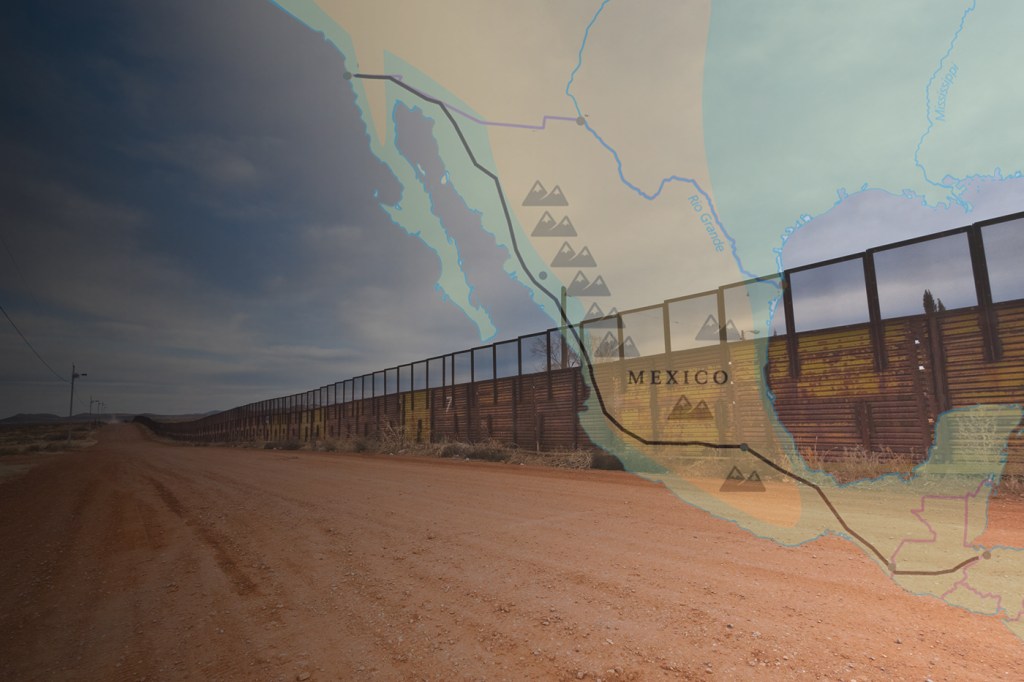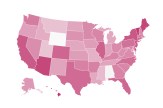Follow the journey to the U.S. border of the caravan of people fleeing Central America

Scroll through to follow the migrant journey.
Why are they leaving?
Most of the people are fleeing persecution, poverty, and violence in their home countries of Honduras, Guatemala, and El Salvador.
“They’re people who are fleeing gang violence,” said Serena Parekh, associate professor of philosophy at Northeastern, whose most recent book, Refugees and the Ethics of Forced Displacement, analyzes the treatment of refugees from a philosophical viewpoint. “Or they’re fleeing so their sons and daughters don’t get recruited into gangs.”
Tens of thousands of Hondurans, Guatemalans, and Salvadorans have left their countries in recent years, according to the Council on Foreign Relations. Civil wars in the region 30 years ago left a vacuum of power that gang members, corrupt politicians, and drug traffickers were quick to fill.
“These gangs have moved and expanded and now have networks in Mexico as well,” Parekh said. “And if they’re determined to find you, they will.”
As organized crime networks grow, they pressure civilians to join their ranks, using any means necessary, said Tiffany Joseph, associate professor of sociology, anthropology, and international affairs, who studies the consequences of public policy on immigrants’ health and access to healthcare. Saying no often results in a violent response.
This means that for those fleeing, the only option is to head north and keep going.
“The only way to be safe, for many of these people, is to get to the United States,” Parekh said. It’s not a caravan of migrants, then, but of asylum-seekers.
Why are they traveling in a caravan?
Gaining refugee status and obtaining asylum require different procedures, although in both cases someone is seeking safety from violence.
The difference is that refugees have to apply for refugee status from within their own country, Joseph said. Those seeking asylum can’t be given that status except by the country they’re traveling to.
“When someone is trying to apply for asylum status, the burden of proof is higher,” Joseph said. “They’re not arriving with any legal status already.”
Because asylum-seekers are traveling across country borders without any authorization, their journey is much more dangerous, Parekh said. Some people hire a smuggler, but doing so makes them vulnerable to “extraordinary physical danger” at the whim of the smuggler, she said.
“So people said, ‘let’s travel together, and we won’t fall prey to criminal gangs,’” Parekh said. Safety in numbers.

What will happen once they reach the U.S. border?
Some people already have. Hundreds of asylum-seekers from the caravan made it to Tijuana, Mexico, where local officials have been scrambling to find shelter and care for the thousands of asylum-applicants already there, waiting to make their case at the U.S. border.
Just as asylum-seekers have to make their own case, the United States has an international legal obligation to adjudicate their claims.
“There’s no such thing as an illegal asylum-seeker,” Parekh said. “People have a right to get to the country for asylum however they can.”
She said that the United States and its citizens have an ethical obligation to this vulnerable population of people seeking asylum from violence.

“As a country we’ve agreed for 50 years in modern international law that people should not be sent away if they have a legitimate reason for entering,” Parekh said. “If somebody is asking for asylum and you send them back, you’re culpable for their death. That’s a very strongly-established principle.”
What can U.S. military troops deployed at the border do?
At the end of October, President Donald J. Trump deployed more than 5,000 military troops to the United States-Mexico border in anticipation of the arrival of the caravan. But Joseph said that the U.S. military “does not have the legal authority to adjudicate or determine asylum status at the border.”
“That is the job of Homeland Security,” she said.

Joseph said that it’s not clear how recent personnel changes in the Trump administration (notably the decision to replace Attorney General Jeff Sessions with Matthew Whitaker and predicted changes in Homeland Security leadership), will affect how the people in the caravan are treated when they arrive at the border.
“It’s hard to know what will happen,” Joseph said. “We can try to speculate based on the president’s past rhetoric around the issue of immigration, and we’ve seen that he’s tried to prevent people from reaching the border in order to deny them the opportunity to apply for asylum.”
What happens if someone is granted asylum?
Even asylum-seekers who successfully enter the United States still face barriers, Joseph said. English proficiency, education, economic background, and race are all measures by which they’re judged, she said.
The shifting immigration policies presented by the Trump Administration also make it difficult to tell with any certainty how the people in the caravan will be received by the U.S. government.
“It could very well be that people’s immigration status could be a barrier for getting access to public services like healthcare,” Joseph said.






